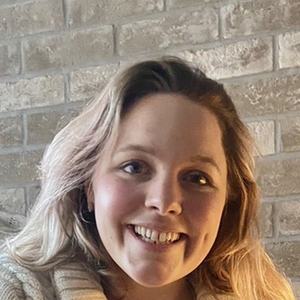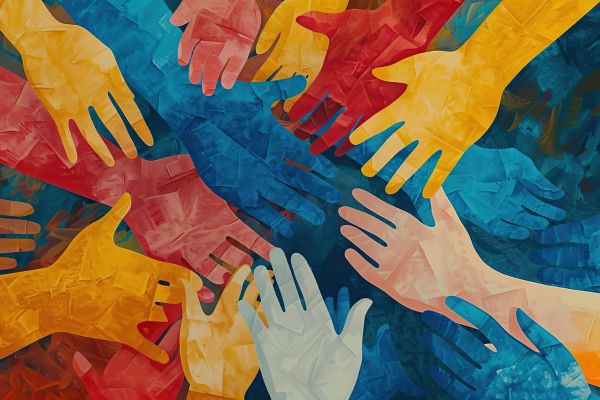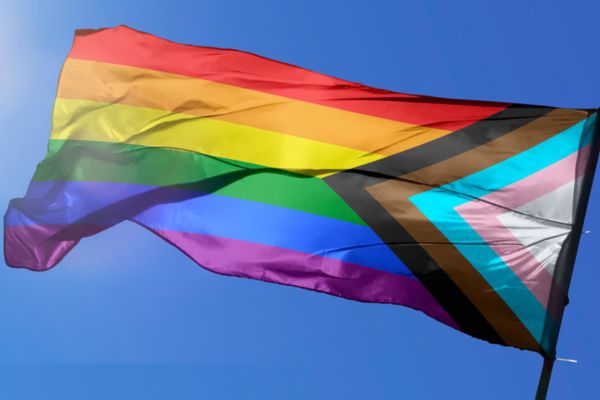Insights
INSIGHTS
All Topics
My Account
Six ways to get people using inclusive language
21 Jul 2023by Ettie Bailey-King
Here we discuss some practical ways that charities can approach the use of inclusive language
Join the inclusive language webinar
Inclusive language matters. It shapes our thoughts and it affects our ideas of who is normal and whose needs we should care about. It helps to create a culture where people feel welcomed, respected, and safe to be themselves.
If we neglect inclusive language, we leave our staff at risk of abuse. If we model its importance – while also taking practical action to reduce inequalities at work – we can help create a more just workplace. And, ultimately, a more just world.
So how do we make inclusive language the norm in our charity or nonprofit?
Here are six practical tips to help you mainstream inclusive language.
1. Treat inclusive language as essential
Inclusion isn’t a nice-to-have. It’s the bare minimum.
If we treat inclusive, equitable, and accessible communication as an add-on, we’re likely to neglect it. In the battle for scarce budget, time, and energy, it will come last.
Flip the script that says: “First write the job advert, then check if it’s inclusive” or “first create the report, then consider whether it’s accessible”.
We must put inclusion and equity first. Because they’re inseparable from our broader work.
Embed inclusive language in all your standards. For example, you could include inclusive and accessible language as a success criterion for all new webpages or have it as a basic requirement before a new report or product can be published.
2. Be active
As Angela Davis says: “In a racist society, it is not enough to be non-racist, we must be anti-racist.”
It’s not enough to avoid being racist, sexist, classist, ableist, and so on. We must actively challenge and dismantle these systems of oppression.
When you’re thinking about inclusive language – whether you’re writing an inclusive language guide, training staff, or assessing how inclusive your digital content is – go beyond mere inclusion.
Include sections in your house style guide and communications materials that clearly explain what systems of oppression like racism, sexism and classism are, how they show up in your work, and how thoughtful language can help challenge them.
You don’t need to have all the answers yourselves; you can point your staff to free resources to help them learn about anti-oppression, like the Fearless Futures podcast.
3. Link it to your mission
“I really care about anti-racist and anti-sexist language” says charity social media manager Natasha, “But no one at my work seems that bothered. They say it matters, but then there’s no training, nothing in the style guide, and it’s not part of our assessment processes.
We’re a mental health charity. And we know inclusive language affects people deeply – so it should be right there in our mission and vision.”
How can you connect inclusive language with your core mission? You can show how inclusive language makes you better able to speak out on the issues that affect your service users.
Could you embed a commitment to inclusive language in your formal strategy? Or spell out how accurate, equitable language makes you better at meeting the needs of minoritised people you serve?
4. Create learning resources
As an inclusive communication consultant, I’m often asked to create inclusive language guides. But guides can be limiting. To communicate inclusively, we need nuance, context, and deep knowledge. Not a list of “say this, don’t say that” rules.
That said, they can be a good starting point because they help staff to build up their confidence levels.
Consider creating some learning resources, with sections on topics like:
- LGBTQIA+ inclusive language,
- Disability and accessibility,
- Simple writing,
- Anti-racist language,
- Heterosexism (homophobia)
- Cisssexism (transphobia)
- Class and socioeconomic status,
- And other topics – especially the issues that come up the most in your work.
5. Think intersectionally
Topics like racism and sexism might sound like separate topics, but they overlap.
As Audre Lorde said, “we don’t live single issue lives”. A Black woman isn’t affected by racism in the morning, then sexism in the evening. She is affected by the intersection of both racism and sexism (also called misogynoir).
This is called intersectionality. As well as taking an intersectional approach to inclusion in your charity, make sure your language guidance reflects the fact that these issues overlap.
6. Commit to constant learning
Inclusive language is always evolving.
While it’s tempting to have a set of language rules in your style guide, that’s unlikely to be helpful. There are no laws.
There are preferred terms. For example, Global Majority is now a widely-supported synonym for people of colour And there are questioned terms, like the umbrella term BAME, which is now widely rejected.
There are patterns. Like the fact that most disabled people in the UK use identity-first rather than person-first language.
And there are important contexts to know about. For example, many LGBTQIA+ people see “queer” is a wonderful word we’ve reclaimed, not a slur term.
These are strong trends, but it still doesn’t meant that everyone agrees.
Telling people “never say this” without explaining why a term is stigmatising, inaccurate or unhelpful won’t create a truly inclusive culture.
Instead, commit to constant learning and discussion.
Sign up for newsletters, like inclusive language newsletter, Fighting Talk.
Follow charities, companies and content creators who talk about anti-oppression, like Fearless Futures, Runnymede Trust or Stonewall.
Keep up to date with relevant awareness days, and use them as a springboard to host book clubs, movie screenings or informal chats with your team.
Above all, create space for discussion and debate. It’s essential for building an inclusive culture. So your team can reflect on the importance of their words, challenge behaviours and words that are harmful, and grow their self-awareness and commitment to justice every day.
More on this topic
Related Content
Recommended Products
07 Mar 2025by Ioan Marc Jones
A-Z incredible fundraising ideas for charity
07 Mar 2025by Ioan Marc Jones
An A-Z glossary of service delivery terms and definitions
07 Mar 2025by Laura Stanley
Marketing trends for charities in 2025
Our Events
Charity Digital Academy
Our courses aim, in just three hours, to enhance soft skills and hard skills, boost your knowledge of finance and artificial intelligence, and supercharge your digital capabilities. Check out some of the incredible options by clicking here.






















